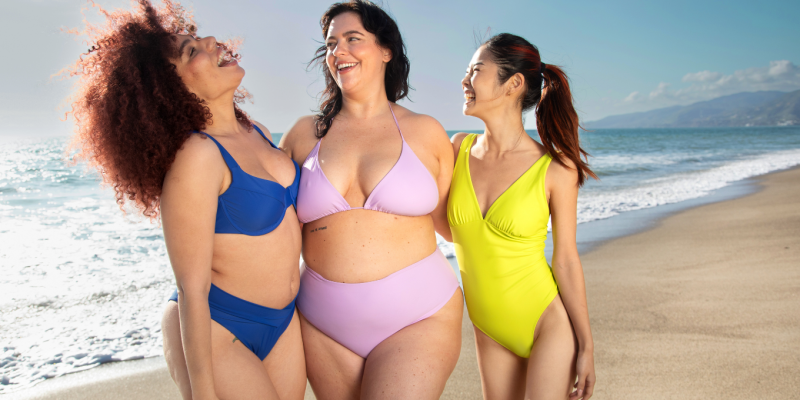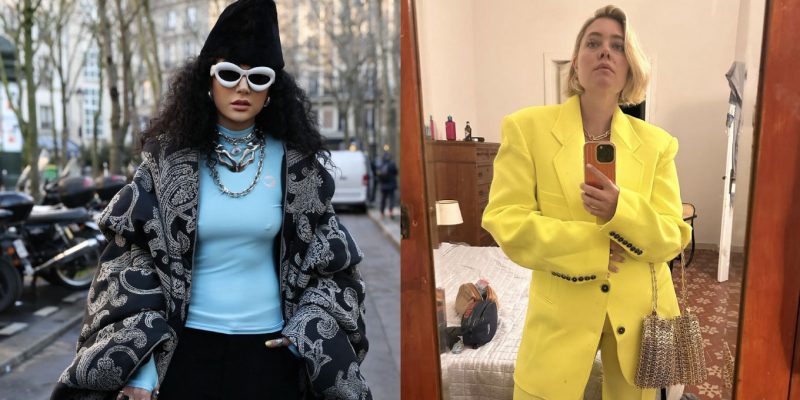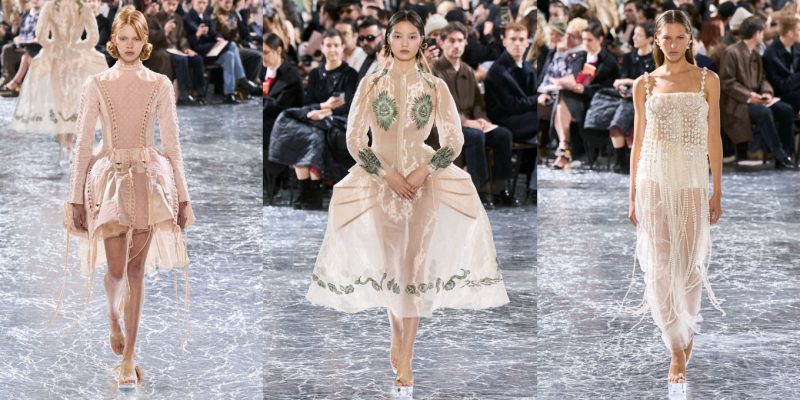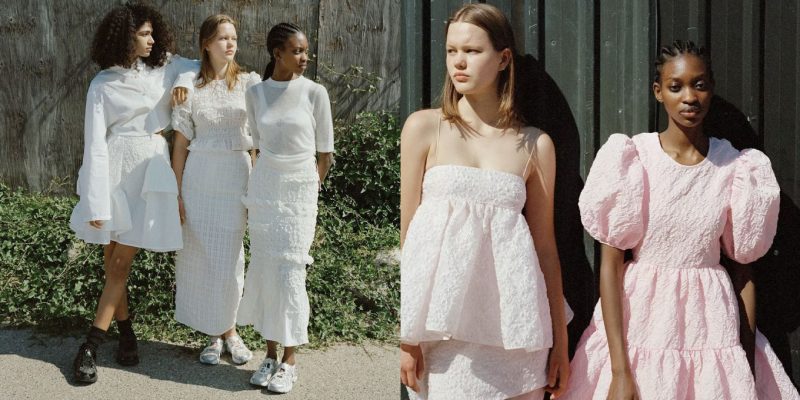Trends
We’re In The Hot Pink Renaissance — Here’s Why It’s Feminist
The colour’s comeback is more than just this season’s hottest hue.
by : Natalie Michie- Jul 4th, 2022

Jaap Buitendijk/Warner Bros
Often associated with flirtatiousness, rebellion and hyper-femininity, hot pink has a complicated legacy. It’s perhaps no surprise that in the maximalist fashion landscape of 2022, the contentious colour is everywhere. From designer collections to popular media, the ubiquitous shade is defining a new era of radical self-expression, sans outdated gender stereotypes.
Italian luxury house Valentino is partially to thank for this. For the label’s fall 2022 ready-to-wear show, Creative Director Pierpaolo Piccioli leaned into the audacious colour with a monochrome presentation of hot pink walls, runways and garments that quickly went viral. Other brands have also embraced the vibrant hue in recent releases, from Blumarine’s pre-fall 2022 show to Rick Owens’ spring 2023 menswear collection. Not to mention, the bold shade has emerged as a non-binary fashion staple among stylish celebs, as seen Lizzo, Zendaya, Harry Styles, Lil Nas X and Billy Porter.
Treating hot pink as a gender-neutral colour is no longer revolutionary, and that in itself is kind of a big deal. “The adoption of the colour by men is a reflection of our culture’s active move away from traditional gender roles,” says Shakaila Forbes-Bell, Afterpay’s in-house fashion psychologist.
Longstanding fashion rules that assign pink to girls and blue to boys play into outdated stereotypes. Hot pink, specifically, has historically been used to portray a version of femininity that is vapid and materialistic. And up until recent years, women felt pressure to reject the bright colour, especially in professional environments, says Nafissa Ismail, a professor at the University of Ottawa whose research includes colour psychology. “It expresses femininity in a very bold manner, and for quite some time in our society, we were afraid of doing so,” she says. But as it seeps into mainstream fashion, hot pink is being reclaimed as an emblem of empowerment. Enter: the viral sensation of modern-day Bimbohood.
Fiona Fairbairn is one of many self-proclaimed bimbos on TikTok, a growing movement that aims to reclaim the derogatory term used to call women unintelligent. The word “bimbo” evokes distinct visuals: glitzy accessories, matching tracksuits and bright, bubble gum pink. But new-age Bimbohood confronts the negative connotations of the word by leaning into its visuals.
“Hot pink is a very fierce colour,” says Fairbairn. The Toronto-based content creator has no qualms about its implications of a high-maintenance lifestyle. “If I want the best things, especially being a Black and Indigenous woman, I should have [them].” For her, wearing hot pink means unapologetically taking up space.
The colour has always been used as a tool to enthrall those who see it. The legacy of the head-turning hue can be traced back to Marilyn Monroe in 1953’s Gentlemen Prefer Blondes. Monroe donned a hot pink satin gown during her cheeky performance of “Diamonds are a Girl’s Best Friend,” satirizing her character in the film as a shallow gold digger. The iconic outfit has lived on through the years as a symbol of this stereotypical archetype. And over time, the charged implications of hot pink persisted.
In early aughts media, hot pink was often put in proximity to unlikeable women. Apart from 2001’s Legally Blonde, which promoted the idea that you can be smart, kind and independent while clad in pink, the colour was overwhelmingly looked down on. Hollywood’s demonization of ultra-femininity in the 2000s came in the form of pink-loving bullies, like Mean Girls’ Regina George and High School Musical’s Sharpay Evans. These characters’ interests in fashion, shopping and the colour pink became indicators of their villainy.
But the 2020s are ushering in a fresh outlook on hot pink, one that actually celebrates those who wear it. Case in point: the upcoming Barbie film. Directed by feminist filmmaker Greta Gerwig, the live-action adaptation brings the doll’s perma pink world to life. It will reportedly cast a critical lens on the exclusivity of the franchise, with diverse versions of Barbie played by Margot Robbie, Issa Rae and Hari Nef. With each new pink-filled poster and behind-the-scenes photo, the viral hype surrounding Barbie intensifies. There is a growing desire to redefine hot pink. And it’s not hard to see why.
After years of locked-down living, the vivacious shade encourages people to get excited about fashion again, says Ismail. “We’ve been at home, isolated from others where we have felt lonely. And now, we want to feel love. We want to feel warm. We want to be noticed.” Hot pink provides its wearers with a unique sense of confidence and joy, adds Forbes-Bell. She notes that the colour’s revival aligns with the growing demand for gender-fluid fashion. As society grows weary of gender roles, we’re releasing the negative connotations of hot pink. “It’s for everyone now because everyone’s realizing the boldness and power within the colour,” explains Fairbairn.
In the age of dopamine dressing, non-binary fashion and experimental personal style, hot pink celebrates being seen. “If you go out with a bold hot pink outfit, you know people are going to look,” says Fairbairn. “But what’s wrong with that?” By bringing the spirited shade into the mainstream, fashion is flipping the script on its most gendered colour.
Read more:
Yellow Is the New Black: Shop the Colour Trend
How to Shop the Colour of the Moment: Kelly Green
The Top Fashion Trends for Spring-Summer 2022
Newsletter
Join our mailing list for the latest and biggest in fashion trends, beauty, culture and celebrity.
Read Next

Beauty
Dr. Idriss Skincare Is Finally Available in Canada
We chatted with the internet's favourite derm about her routine, overrated (and underrated!) skincare advice and why butt paste is her secret cure for inflamed skin.
by : Melissa Fejtek- Apr 24th, 2024

Beauty
Summer Prep: How to Feel Confident in Your Swimsuit
New Size-Inclusive Swimwear: Gillette Venus partners with The Saltwater Collective to Launch a Collection for Any Body
by : ELLE Canada- Apr 24th, 2024

Beauty
Tested and Approved: Your New Hydrating Skincare BFF
This new product has all of your skin’s thirst-quenching needs covered.
by : ELLE Canada- Apr 17th, 2024




